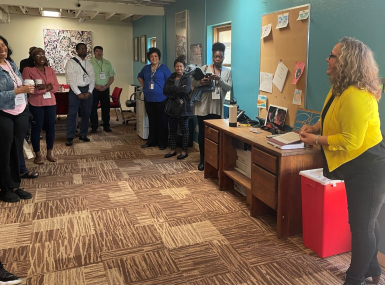DOE gives new boost to energy efficiency
Upcoming Events
Related News
The Department of Energy’s Better Buildings initiative, intended to increase energy efficiency in the nation’s homes, commercial buildings and industrial plants, has added a new set of Better Buildings accelerators — activities designed to demonstrate specific innovative policies and approaches that would accelerate investment in energy efficiency.
Initiated under President Obama’s 2013 Climate Action Plan, each accelerator is a targeted, short-term, partner-focused activity to address barriers to greater efficiency.
DOE launched three new accelerators in May, focused on Clean Energy for Low-Income Communities, sustainable Wastewater Infrastructure and Combined Heat and Power for Resiliency.
For more information on how to get involved in the DOE’s Accelerator program, send an information request here.
The Clean Energy for Low Income Communities Accelerator aims to lower energy bills in low-income communities through expanded installation of energy-efficient and distributed renewable energy sources. Although the primary objective of increasing clean energy installations in low-income communities is to help reduce energy costs, participation in the accelerator can bring a number of additional benefits, as energy efficiency can lower the overall need and costs for energy, and make buildings more comfortable. Distributed renewables (generated near point of use) can provide stable energy costs, promote economic development and improve the environment.
The Wastewater Infrastructure Accelerator will work over three years with state, regional and local agencies that are engaging with water resource recovery facilities in their jurisdictions to accelerate a pathway toward a sustainable infrastructure of the future.
The accelerator aims to spur the adoption of innovative and best-practice approaches in data management, technologies and financing for infrastructure improvement.
Partners will seek to improve the energy efficiency of their participating water-resource recovery facilities by at least 30 percent and integrate at least one resource recovery measure.
The Combined Heat and Power for Resiliency accelerator will support and expand the consideration of combined heat and power (CHP) and other distributed generation (DG) solutions for critical infrastructure.
As a collaborative effort with states, communities, utilities, and other stakeholders, partners will examine the perceptions of CHP/DG among resiliency planners; identify gaps in current technologies or information relative to resilience needs.
They will also establish a value for CHP/DG in resilient operations in critical infrastructure; and develop strategies for communities to capitalize on CHP’s strengths as a reliable, high-efficiency, lower-emissions electricity and heating source for critical infrastructure.
Partners will collaborate with jurisdictional counterparts to establish a decision framework, documenting their process for replicability.
Attachments
Related News

House and Senate leaders release text of 2024 Federal Aviation Administration reauthorization compromise
House and Senate leaders release text of 2024 Federal Aviation Administration reauthorization compromise.

Bernalillo County empowers youth through community-based services
Bernalillo County, N.M.'s funding has allowed a drop-in center to cater to young people's needs while giving them an added sense of security.
